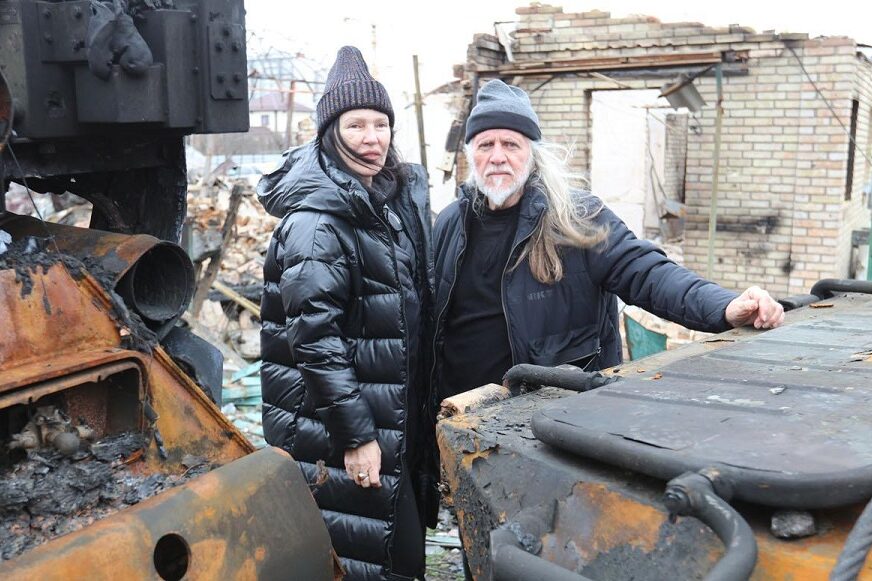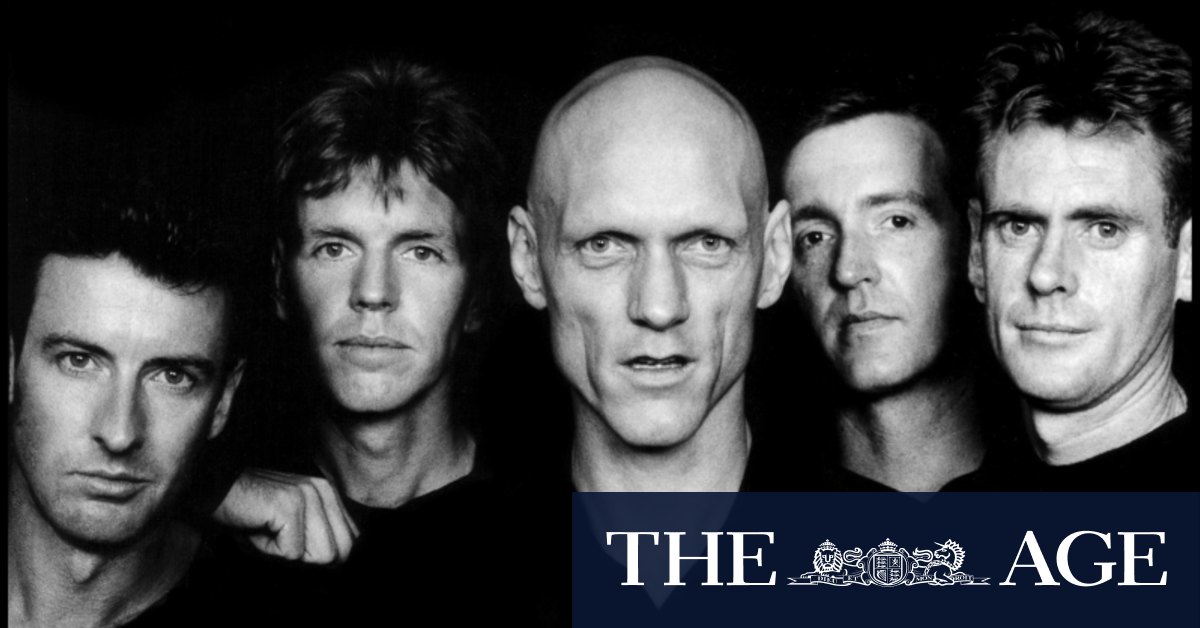Dance / The Dataset, Australian Dance Party. At The Vault, until June 29. Reviewed by SAMARA PURNELL.
Inside the cavernous space that has been hidden behind a black velvet curtain, an American voiceover calmly tells us to rehydrate, switch off our devices and informs us that there are 180 seconds until commencement.
Fluorescent tube-lights hang from the ceiling and are positioned upright on the floor as well. Snippets of sound sync to the flickers and pulses of the lights. They appear to be “loading”.
“Breathe” we are calmly instructed. And we obey.
The soundscape, created by Sia Ahmad and lights, designed by Jordan Hodge, continue on for long enough before two dancers appear, so as to become entities, characters in their own right, not just an introduction to the choreography.
Dancers Alison Plevey and Sara Black are digitally scanned before they undergo a “Biomet Rejuvenation”. They pose in various positions, appearing to mechanically take their own pulse.
As sentences with letters composed of 1s and 0s appear across the vast back wall, the exhaustive list of metrics and specifications to be measured and assessed are read aloud. Every possible physical detail and body composition will be downloaded, but also thoughts, emotions and even a charisma rating, that make up the “present you”. The dancers are then gently told to interact with themselves in digital form.
Who has programmed this all-knowing artificial intelligence? How did this come about? How often must this be undertaken? Although “benign”, this process doesn’t appear to be a choice. Are these humans being helped or controlled? This digital entity that measures and stores every detail of numbered humans doesn’t stop there. It directs a daily schedule: Rest in pod, morning routine, downtime…
The choreography seamlessly fits with the pings and clicks and digital sounds in a surprisingly relaxing soundscape. Black’s movements are precise, with isolations and rigid movements, a matter-of-fact execution, seemingly unconcerned with the process and indefatigable. In contrast, Plevey’s character displays emotion, playfulness, curiosity, mild distress, before ultimately, exhaustion.
A huge, landscape projection flicks through hundreds of frames of imagery – memories and “files” about both humans. Contrary to their dance styles, Black’s “data” is more emotive, with pictures of flowers, places and faces, whereas Plevey had laptop files and reports with the occasional glimpse of personal details related to motherhood, including an ultrasound, the image of which, despite its brevity, elicited both poignancy and a sense of privacy invasion.
Once this “data nourishing” is complete, the AI appears to decide what is erased and how it is filed. Things take an ominous turn when it goes so far as to suggest and implement a new friendship, a helpful but forced “beneficial connection”.
There is a tinge of sadness in observing these humans engage and attempt a meaningful connection. The choreography is delicate and sweet, with mimicry and brief physical human contact. Whether daily life may or may not entail autonomous contact, the assumption is that outside of these scanning and data download interludes, life is still rather “normal” – relationships, work, hobbies, eating and drinking, sleep. Yet this literal dark and digital world created here makes that seem remote and strange.
The background begins to pixelate, the lights flicker, the AI system begins to malfunction amidst acclamations that this new contact between the humans is working and beneficial and should be maintained. The soundscape that had been building throughout the performance filled the space, without being overwhelming. When the performance appeared over, static continued in the blackout, creating a post-apocalyptic atmosphere. With discussions currently raging over nuclear power, the aftermath of a disaster or failure is front-of-mind. What skills would be required or remembered to survive and function?
The dancers, who have manipulated the floor lights throughout the performance, pile them up carefully. Once the lights begin to glow orange, it is evident this is now a fire. As the humans attempt to operate manual radios and torches, they create what initially appears to be homeless camps. But as other people gather, over shared warmth and food, a natural, face-to-face community is created, reverted to, enjoyed.
This engrossing production creates an encompassing atmosphere in this concrete space, where each thoughtful element of sound, visuals, lighting, props and dance are given equal importance.
The Dataset renders the decision to purely observe or to intellectualise, analyse and discuss this AI world, that seems inevitable, up to the viewer.
Who can be trusted?
In a world of spin and confusion, there’s never been a more important time to support independent journalism in Canberra.
If you trust our work online and want to enforce the power of independent voices, I invite you to make a small contribution.
Every dollar of support is invested back into our journalism to help keep citynews.com.au strong and free.
Thank you,
Ian Meikle, editor





